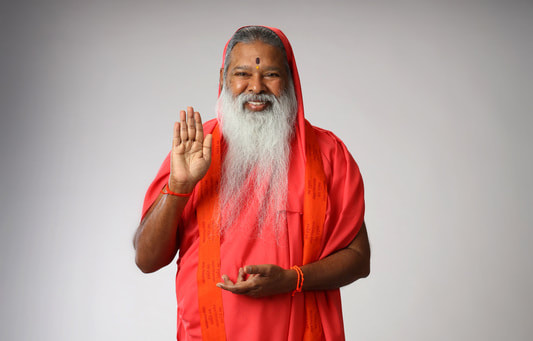The Galaganatha Temple, nestled in the historical region of Pattadakal, Karnataka, offers a fascinating glimpse into the architectural genius of the Chalukya dynasty. Estimated by the Archaeological Survey of India (ASI) to date from the mid-8th century, this northern rekha-nagara style temple stands as a remarkable example of early Hindu temple design, offering valuable insights into the religious and cultural practices of the time. While some scholars, such as Michael Michell, propose a slightly earlier date, suggesting the temple was likely built in the late 7th century, its unique features continue to captivate historians and visitors alike.
A Unique Architectural Legacy
The Galaganatha Temple’s design follows the rekha-nagara style, characterised by a towering, curvilinear spire. At the heart of the temple stands the linga, a sacred representation of Lord Shiva, housed within the sanctum (garbha griha). This temple is particularly notable for its antarala or vestibule, which marks the transitional space between the sanctum and the outer hall, a feature that highlights the evolving architectural techniques of the period.
One of the most intriguing elements of the temple is the circumambulatory path (pradakshina patha) surrounding the sanctum, indicating the deep-rooted tradition of circumambulation in Hindu worship by the 7th to 8th century. This path allowed devotees to walk around the sanctum as an act of reverence, a practice that would go on to become a defining feature of temple layouts in the centuries that followed.
Key Features: Nandi, Mandapas, and Sculptures
Situated to the east of the Jambulingeshwara Temple, the Galaganatha Temple is partially in ruins, with only the southern part of the structure remaining largely intact. Among the preserved features is a striking seated Nandi (the sacred bull), facing the sanctum and symbolising the vehicle of Lord Shiva. The Nandi, a hallmark of many Shaiva temples, continues to mesmerise visitors with its detailed carvings and serene posture.
Several mandapas (pavilions) once graced the temple complex. These include a sabha mantapa, used for communal and ceremonial gatherings, and a mukha mantapa, of which only the foundation remains today. The entrance to the mantapa is flanked by intricately carved depictions of the river goddesses Ganges and Yamuna, representing the divine flow of life and purity.
A highlight of the temple’s visual art is the carved slab on the southern part of the temple, which features a dramatic portrayal of Shiva in his eight-armed form, slaying the demon Andhaka. This sculpture is particularly notable for the depiction of Shiva wearing a garland of skulls, symbolising his association with death and destruction, a powerful reminder of his role in the cosmic cycle of creation and destruction.
Temples of Shared Influence: Alampur Connection
The Galaganatha Temple bears a striking resemblance to the Svarga Brahma Temple of Alampur, Andhra Pradesh, which is dated to 689 CE. This similarity suggests a shared architectural tradition between the two temples, possibly due to the cultural exchanges that took place within the Badami Chalukya Kingdom. As both Pattadakal and Alampur were prominent centres under Chalukyan rule, it is likely that the same artistic and religious influences shaped the design of these temples.
A particularly interesting feature of the Galaganatha Temple is the friezes on the basement’s eastern moulding, which depict tales from the Panchatantra, an ancient Indian collection of animal fables. Notable stories include the famous tale of the mischievous monkey and the two-headed bird, which not only showcase the narrative tradition of the time but also the rich decorative artistry employed by the temple’s craftsmen.
Visitor Guide: How to Explore Galaganatha Temple
Location: The Galaganatha Temple is located in the ancient town of Pattadakal, which is about 15 km from the city of Badami in Karnataka. Pattadakal, a UNESCO World Heritage Site, is renowned for its group of temples, making it a must-visit destination for history enthusiasts and cultural explorers.
Best Time to Visit: The ideal time to visit the Galaganatha Temple and the surrounding Pattadakal complex is between October and March, when the weather is cooler and more pleasant for outdoor exploration.
How to Reach: The nearest major railway station is Badami, and the town is well-connected by road to other parts of Karnataka. Taxis and buses are available for travel from Badami to Pattadakal.
Things to Do Nearby:
- Explore the Pattadakal Temple Complex, which includes several other historical temples, such as the Virupaksha Temple and the Mallikarjuna Temple.
- Visit the Badami Caves and Agastya Lake, located a short distance from Pattadakal.
- Discover the rich cultural heritage of the region through local museums and art galleries.
Tourist Tips:
- Bring comfortable walking shoes as the temple grounds require some exploration on foot.
- Carry water and sunscreen, as the open-air temple site can get quite warm, especially during the midday hours.
- Hire a local guide or join a guided tour for deeper insights into the history and significance of the temple’s sculptures and architecture.












